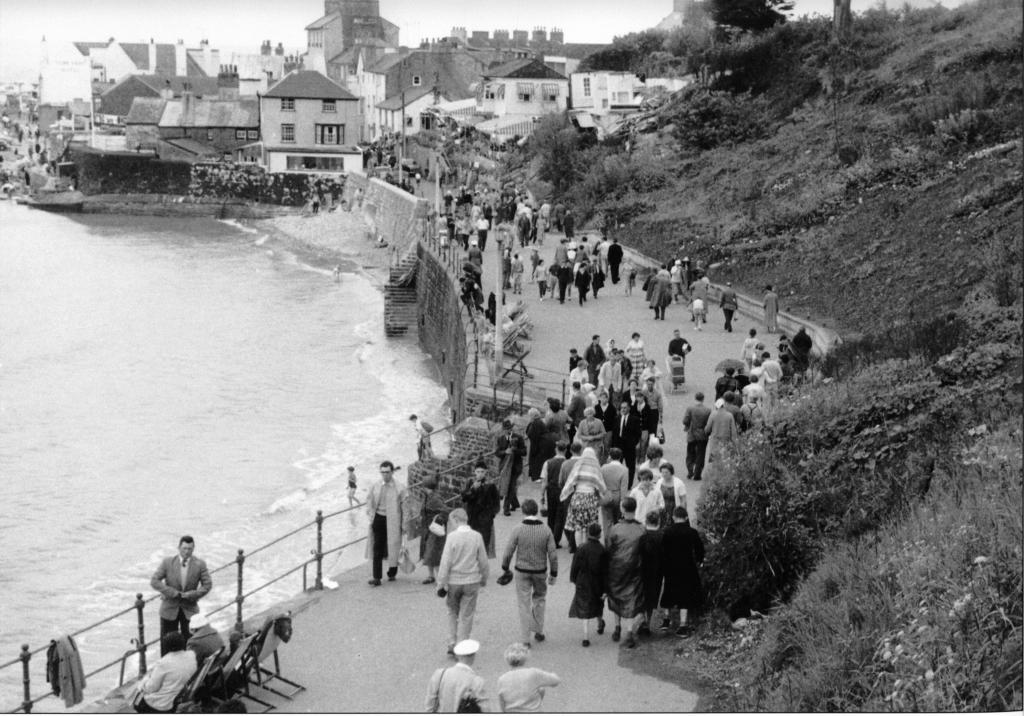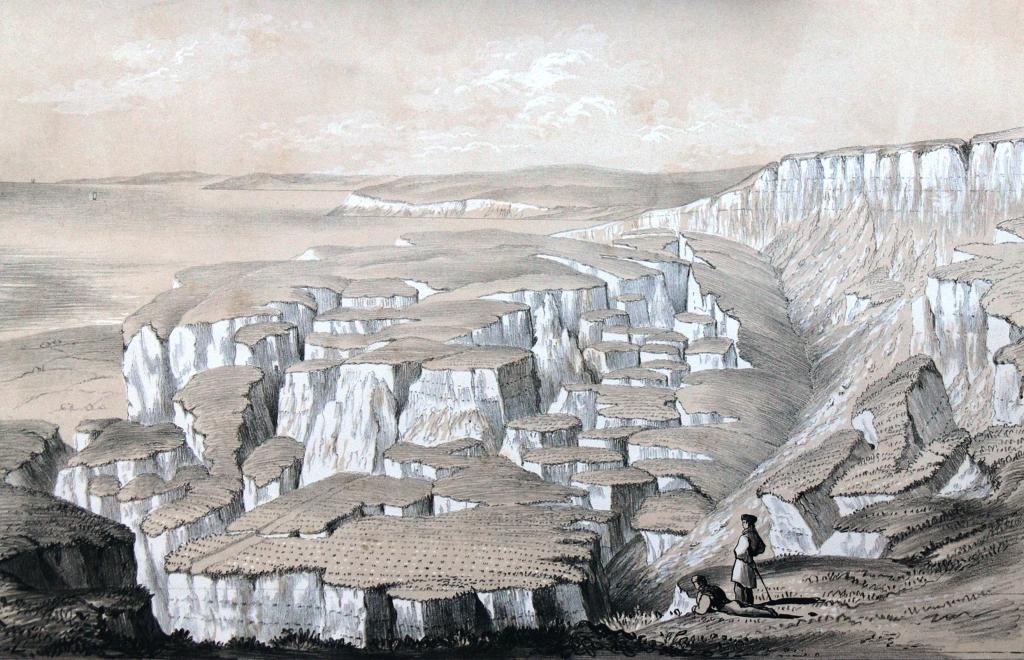o


The 12th century forerunner of Lyme Regis was grouped around a church on a small knoll at the eastern end of the town adjacent to the River Lim. This was linked by a track to a small harbour 700 m to the west that was protected from the prevailing south westerly gales by a harbour wall (The Cobb). The intervening area, underlain by seaward-dipping Jurassic mudstones and prone to landslide, remained undeveloped until the Victorian fashion for seaside resorts caused the town to expand.
The 1839 Bindon Landslide is the most famous mass-movement feature in Britain. Tens of millions of tonnes of Cretaceous rocks became detached from the 120m-high cliffs and slid seaward. The event attracted large numbers of sightseers including the pioneer geologist William Buckland and his artistic wife Mary. A large detached slab (Goat Island) attracted particular attention. Winter corn that had remained undamaged was ceremonially harvested the following August by local village maidens dressed as attendants of Ceres, the Roman Goddess of the Harvest.